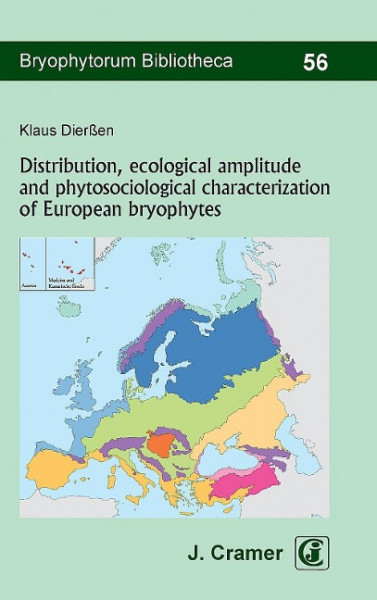
Distribution, ecological amplitude and phytosociological characterization of European bryophytes
Kurzinformation
inkl. MwSt. Versandinformationen
Artikel zZt. nicht lieferbar
Artikel zZt. nicht lieferbar

Beschreibung
This compendium lists the geographical distribution, ecological characteristics and phytosociological preferences of about 1,150 mosses and about 450 liverworts occurring in Europe and in Macaronesia (Azores, Canary Islands, Madeira, and Capo Verde). "Geographical distribution" is expressed by the formula developed by Meusel et al. and widely adopted in Central-European botanical literature. Threat categories follow the IUCN threat classification and are presented for all threatened taxa. The section on "Ecological amplitude" lists preferences of each individual species for acidity, nutrient availability, pollution, humidity, heat balance, light, substrate, and human impact. Preferred habitats are summarized in one or more lines of a "free language" description (e.g., "usually on decaying organic matter, most frequently on rotting tree stumps, occasionally on old grass tussocks, on the border of peat diggings and regionally on sandstone" for Aulacomnium androgynum). The "Life strategy category," equivalent to "life forms" in vascular plants, is also listed for each species. Under "phytosociological characterization" the author lists the occurrence of each bryophyte species in bryophyte and vascular plant communities. In this part, he refers to two classifications presented in the introduction, one on the bryophyte communities of Europe and the other on the "European vegetation types more or less rich in bryophytes". Over 28 pages of "Consulted literature" list about 600 bryological and phytosociological publications. This unique compendium contains plenty of useful information on mosses and liverworts of Europe. Because many species treated in this book have wider distribution or are circumpolar, this book will also find an attentive audience outside Europe. In North America it will be welcomed by bryologists, plant ecologists, and anyone interested in vegetation and its bryophyte component. von Dierßen, Klaus
Produktdetails

So garantieren wir Dir zu jeder Zeit Premiumqualität.
Über den Autor

- Hardcover
- 428 Seiten
- Erschienen 2008
- Springer Netherlands

- hardcover
- 419 Seiten
- Verlag Paul Parey

- Hardcover
- 380 Seiten
- Erschienen 2012
- Springer

- Hardcover
- 502 Seiten
- Erschienen 2007
- Princeton University Press




 bestellen
bestellen

























